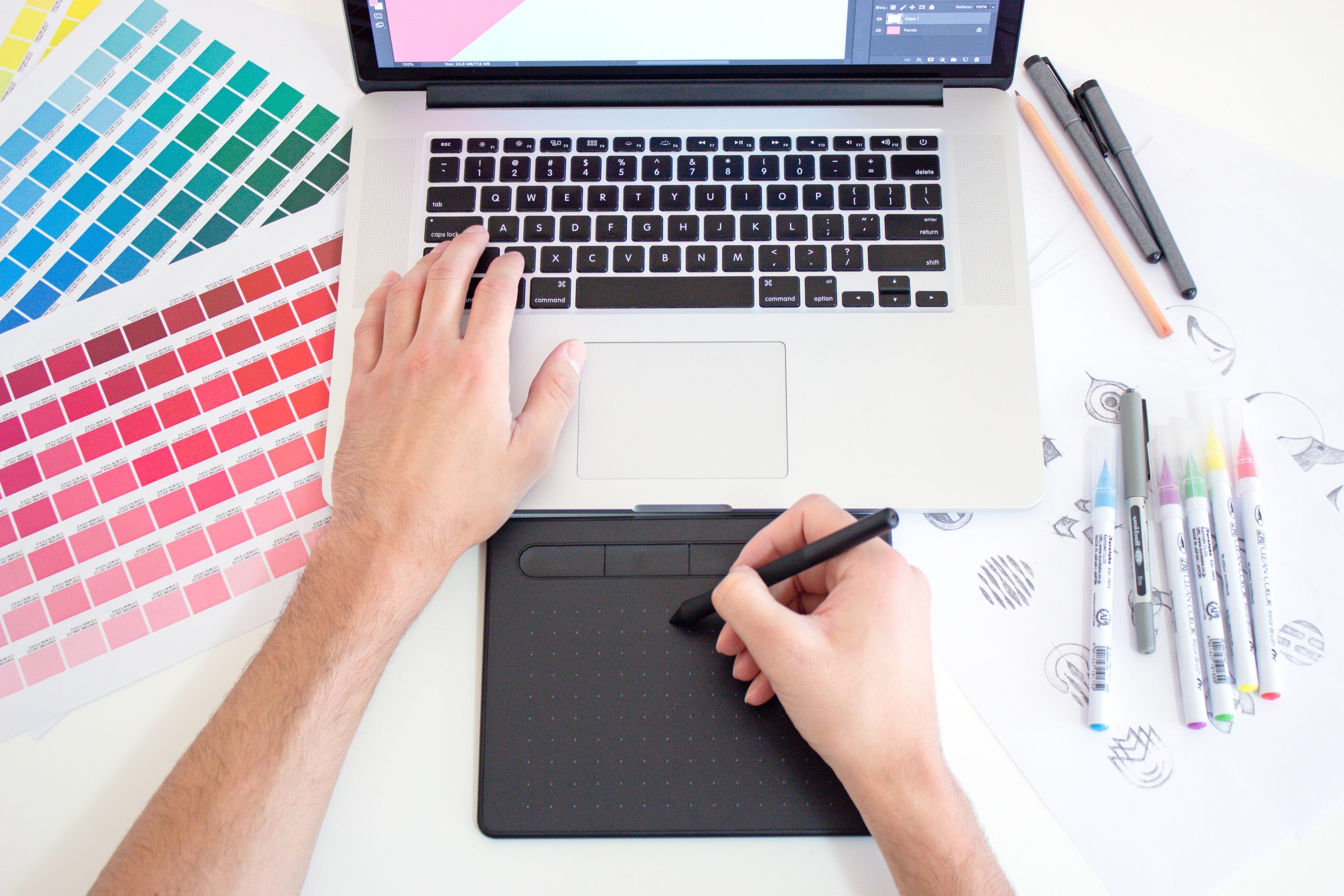Are amazing drawing skills a prerequisite for becoming a successful graphic designer? While it may seem like an obvious yes, the reality is far more nuanced. In today’s digital age, where tools like Adobe Illustrator and Photoshop reign supreme, the demand for traditional drawing skills has been called into question. Join us as we delve into the world of graphic design to explore whether natural artistic talent or technical prowess is more important in this ever-evolving industry.
The importance of drawing skills in graphic design
Many people mistakenly believe that being a skilled artist is a prerequisite for success in graphic design. While it is true that having strong drawing skills can be advantageous, it is not necessarily a requirement. In fact, the importance of drawing skills in graphic design can vary depending on the specific role and industry one is working in.
One of the main benefits of possessing good drawing skills as a graphic designer is the ability to quickly sketch out ideas and concepts. This can be particularly valuable during the initial stages of a project when brainstorming and generating multiple design options. The ability to visually communicate ideas through sketches allows designers to efficiently convey their vision to clients or team members without relying solely on verbal explanations.
Furthermore, drawing skills can also enhance designers’ understanding of composition, proportion, and perspective. A solid foundation in these fundamental elements can significantly improve the overall quality and effectiveness of any visual composition. It allows designers to create well-balanced layouts, visually appealing illustrations, and impactful graphics through careful attention to detail.
However, it’s important to recognize that while drawing skills are beneficial, they are by no means the only path to success in graphic design. With advancements in technology, many tools such as Photoshop or Illustrator offer various ways for designers to achieve desired effects without extensive hand-drawing techniques. Additionally, other aspects such as creativity, problem-solving abilities, knowledge of color theory and typography also play crucial roles in creating compelling designs.

The role of drawing in the design process
Drawing plays a crucial role in the design process, even for graphic designers who may not be creating intricate illustrations. Sketching and doodling are great tools for brainstorming, exploring ideas, and visually communicating concepts. The act of putting pen to paper allows designers to quickly iterate and refine their ideas in a way that digital tools often can’t replicate. It’s a more spontaneous and tactile approach that allows for a deeper connection with one’s creativity.
Furthermore, drawing helps designers better understand proportions, composition, and the visual hierarchy of their designs. By sketching out rough outlines or thumbnail sketches before diving into digital software, designers can create well-balanced layouts with strong focal points. These initial drawings provide a roadmap for the final product and serve as valuable references throughout the design process.
Additionally, drawing enhances problem-solving skills and encourages critical thinking in design. It allows designers to experiment with different solutions before committing to one direction. Observational drawing exercises also sharpen one’s ability to observe details and translate them into visual form accurately. Gaining this level of observation translates directly into better design choices – from selecting appropriate colors to effectively using negative space.
In conclusion, while graphic designers may not need amazing drawing skills on par with professional illustrators, having basic drawing abilities is undeniably beneficial in the design process. Drawing aids ideation, helps visualize concepts more effectively than digital tools alone would allow, improves compositional skills, supports problem solving by encouraging experimentation and fosters observational skills that lead to overall better design decisions.
How drawing skills can enhance creativity
Drawing skills can be a powerful tool in enhancing creativity for graphic designers. While it is true that not all graphic designers need to be amazing artists, possessing solid drawing skills can greatly enhance their creative process. Drawing allows designers to quickly sketch out ideas and concepts, giving them a visual representation of their thoughts. This translates into better communication with clients and colleagues as they can easily convey their vision through sketches.
Furthermore, drawing helps designers develop a keen eye for detail and composition. It enables them to observe and analyze shapes, forms, proportions, and textures more closely. By honing these observational skills through drawing, graphic designers are able to create more visually appealing designs with a better understanding of how elements interact with each other.
Another benefit of having strong drawing abilities is the ability to think outside the box. Drawing encourages experimentation and exploration. It pushes designers to take risks and try new techniques or styles that they may not have considered before. The freedom that comes with pen on paper often leads to unexpected discoveries and fresh ideas that could not have been achieved solely through digital tools.
Ultimately, while drawing skills may not be an absolute necessity for every graphic designer, they undoubtedly serve as valuable assets in amplifying creativity. They enable designers to effectively communicate their ideas, develop a sharper eye for aesthetics, and push boundaries in their work.

The practical benefits of strong drawing skills
Strong drawing skills provide practical benefits to graphic designers that go beyond simply creating beautiful sketches. Firstly, being able to draw well allows designers to quickly and effectively communicate their ideas and concepts to clients and team members, enabling better collaboration and understanding from the start of a project. Instead of relying solely on verbal descriptions or references, designers with strong drawing skills can visually express their visions, making it easier for everyone involved to visualize the end result.
Additionally, strong drawing skills enhance a designer’s ability to develop unique and original designs. By sketching out ideas on paper before turning to digital software, designers have more freedom to experiment with various compositions, layouts, and styles without limitations. This hands-on approach allows for more creativity in problem-solving as designers have an immediate outlet for trying different arrangements or adding spontaneous elements.
Finally, strong drawing skills also contribute significantly to the development of a designer’s visual thinking abilities. Through regular practice in observation and interpretation of details when sketching objects or scenes, graphic designers train their eyes to see depth, proportion, perspective, and other fundamental design principles more acutely. This heightened awareness translates into improved attention-to-detail when working on digital projects such as creating logos or illustrations where precision is essential.
In conclusion, while strong drawing skills may not be obligatory for every graphic designer depending on their specific role or niche within the field; having this skillset undoubtedly offers numerous practical advantages.
The impact of digital tools on drawing abilities
In today’s digital age, the impact of digital tools on drawing abilities cannot be overlooked. While traditional drawing skills were once seen as essential for graphic designers, new technologies have revolutionized the creative process. Digital tools such as graphic tablets and software like Adobe Illustrator have made it easier than ever to create stunning artwork with just a few clicks.
One of the most significant impacts of digital tools on drawing abilities is their ability to enhance precision and efficiency. With traditional drawing methods, artists often have to erase and redo sketches multiple times before achieving perfection. However, with digital tools, this process becomes much simpler. Artists can quickly undo mistakes and experiment with different ideas without wasting time or resources.
Furthermore, digital tools also provide a wider range of possibilities for expression. Traditional drawing techniques often limit artists to paper and pencils, while digital mediums offer limitless possibilities for creativity. Graphic designers can now incorporate layers, textures, and various effects into their artwork easily – something that was not possible before the introduction of technology.
Overall, while some may argue that developing outstanding traditional drawing skills is still important for graphic designers, it is clear that digital tools have significantly impacted modern creativity in numerous ways. These technological advancements have opened up new pathways for innovation and self-expression in graphic design that were previously unimaginable – ultimately proving that amazing drawing skills may no longer be an absolute necessity in today’s industry.

Conclusion: Balancing drawing skills with other design talents
While it is true that drawing skills can be beneficial for graphic designers, they are by no means the sole determining factor of success in this field. Instead of putting all focus on improving their drawing abilities, designers should aim to cultivate a well-rounded set of design talents that complement and enhance their creative process.
The world of graphic design is evolving rapidly, with new technologies enabling designers to create stunning visuals without having extensive drawing skills. In fact, many successful designers today rely heavily on tools like Adobe Illustrator and Photoshop to bring their ideas to life. These software programs offer pre-made shapes, textures, and brushes that can be manipulated and combined in unique ways, allowing designers to achieve impressive results even if they do not possess traditional drawing skills.
Additionally, strong concept development and problem-solving abilities are equally important for a designer’s success. Being able to understand clients’ needs, analyze information effectively, and communicate ideas visually are crucial talents that can greatly impact the quality of a designer’s work. By focusing on these broader design talents while also continuously honing their drawing skills as an additional tool in their arsenal, graphic designers can strike a balance that enables them to thrive in this dynamic industry.
In conclusion, although having excellent drawing skills can be advantageous for graphic designers – especially when it comes to creating original artwork or illustrations – it should not be considered a requirement for success in this field.
